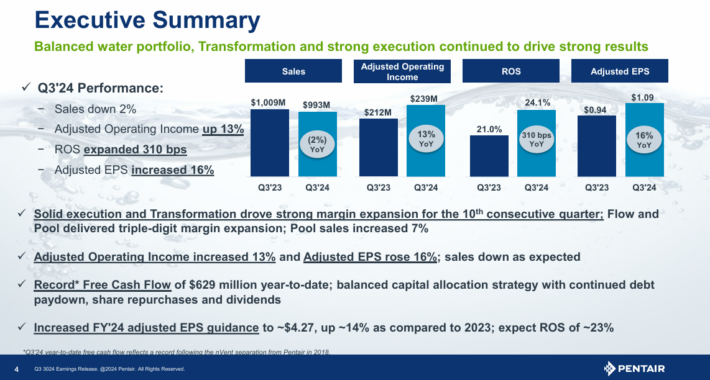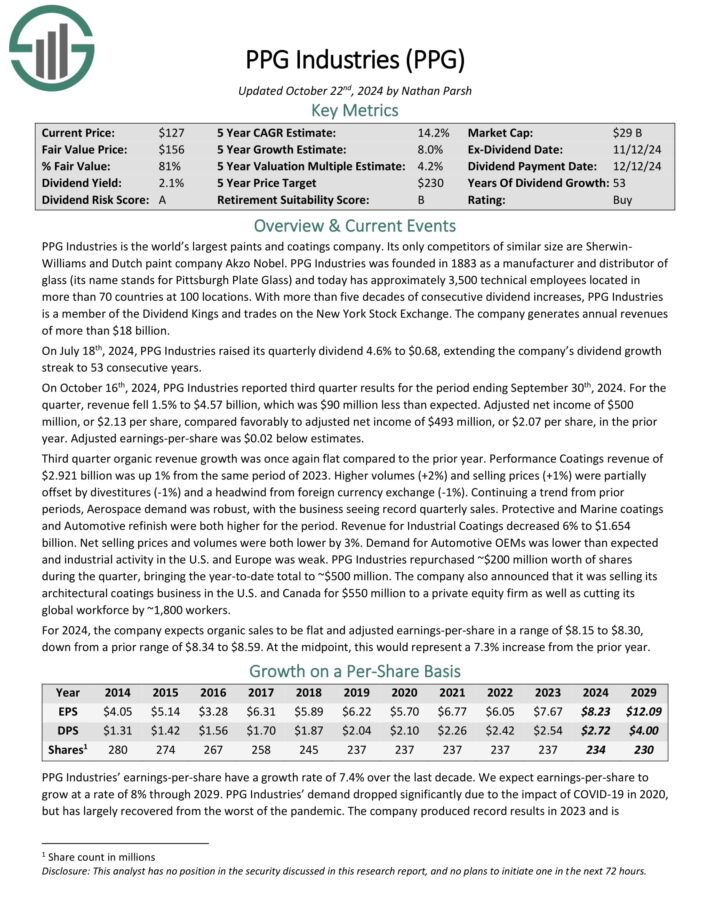This is a guest contribution by Kanwal Sarai from Simply Investing
Updated on December 13th, 2024 by Bob Ciura
Investors can follow several different strategies for stocks. Some investors follow momentum strategies, trading stocks with high price gains. Other investors follow a high growth strategy focusing on tech stocks, like Apple (AAPL) and Amazon (AMZN).
Yet another type of investor seeks income by buying and holding high-yield stocks, like utilities and real estate investment trusts (REITs).
A fourth approach is dividend growth investing, focusing on stocks that pay a growing dividend annually. This strategy is increasingly popular, and the type of stocks are categorized into the Dividend Achievers, Contenders, Aristocrats, Champions, and Kings.
The Dividend Aristocrats are a group of 66 stocks in the S&P 500 Index, that have increased their dividends for 25+ consecutive years.
You can download an Excel spreadsheet of all 66 Dividend Aristocrats (with metrics that matter such as dividend yields and price-to-earnings ratios) by clicking the link below:
This article will discuss dividend growth investing, and several of the various lists of dividend growth stocks.
What is Dividend Growth Investing?
Dividend growth investing is an approach to buying and holding the stock of companies increasing their dividend annually.
Dividend growth investors are looking to invest in undervalued stocks paying a dividend instead of overvalued stocks that do not.
In addition, these investors rationalize that dividends require real cash to pay shareholders and thus are an indicator of the companies’ actual earnings and health.
Furthermore, a company demonstrating the ability to raise the dividend annually over time probably has a good business model.
On the other hand, a company cutting or suspending its dividend is obviously struggling.
Dividend growth stocks are sorted into groups called the Dividend Achievers, Contenders, Aristocrats, Champions, and Kings, but what exactly are they?
What are the Dividend Achievers, Contenders, Aristocrats, Champions, and Kings?
Dividend Achievers are companies that have raised their dividends for ten years in a row or more. Besides the 10-year dividend growth streak, companies must be listed on the New York Stock Exchange or Nasdaq and have a three-month average daily trading volume of $1 million.
Currently, there are about 400 Dividend Achievers. Many companies are from the Consumer, Industrials, Financials, and Utilities sectors. In addition, the group includes technology companies like Microsoft (MSFT), etc.
The next category is the Dividend Contenders. They are stocks raising the dividend for between 10 and 24 years. The list is similar to the Dividend Achievers list, but since it is capped at 24 years, the total number of companies is smaller.
Currently, there are around 368 Dividend Contenders. The sector with the most significant representation is Financial Services, followed by Industrials and Utilities. This group includes companies like Home Depot (HD), Huntington Ingalls Industries (HII), and many local and regional banks.
The Dividend Aristocrats are companies that have raised their dividends for 25+ years and are a part of the S&P 500 Index.
In addition, they must have a minimum market capitalization of $3 billion and a $5+ million average daily trading volume for the three months before the rebalancing date.
There are currently 66 Dividend Aristocrats. The number is relatively small because of the stricter requirements. Sectors with the most significant representation are Consumer Staples and Industrials.
Companies on this list are often larger, well-established companies that are market leaders. For example, companies like International Business Machines (IBM), Colgate-Palmolive (CL), Coca-Cola (KO), and Consolidated Edison (ED) are on the list.
The Dividend Champions are like the Dividend Aristocrats. However, the only requirement is increasing the dividend for 25 or more years. Consequently, the number of companies on the list is greater at 137.
In addition, the list includes companies that are a part of the Dividend Aristocrats and ones with a market capitalization of less than $3 billion and are not a member of the S&P 500 Index.
The two sectors with the most representation are Industrials and Financial Services. Smaller companies on this list include MGEE Energy (MGEE), and Sonoco Products (SON).
The last category is the Dividend Kings. To attain this status, a company must increase the dividend for 50+ consecutive years. There is no other requirement; however, the task is not an easy one.
Currently, there are only 53 companies on the list. Examples of companies on this list include Federal Realty Trust (FRT), Emerson Electric (EMR), Johnson & Johnson (JNJ), and Procter & Gamble (PG).
Dividend Aristocrat Highlight: Pentair plc (PNR)
Pentair is a water solutions company that operates in 3 segments: Aquatic Systems, Filtration Solutions, and Flow Technologies. It was founded in 1966.
The company has increased its dividend for more than four decades in a row, when adjusted for spin-offs. Pentair is one of the top water stocks.
Pentair reported its third quarter earnings results on October 22. The company was able to generate revenues of $990 million during the quarter, down 2% year-over-year.
Source: Investor Presentation
Core sales, which exclude the impact of currency rate movements, acquisitions, and dispossessions, were down 1% year over year.
Pentair recorded earnings-per-share of $1.09 for the third quarter, which was up 16% year-over-year. Pentair’s earnings-per-share beat the analyst consensus by $0.02.
Click here to download our most recent Sure Analysis report on Pentair (preview of page 1 of 3 shown below):
Dividend King Highlight: PPG Industries (PPG)
PPG Industries is the world’s largest paints and coatings company. Its only competitors of similar size are Sherwin-Williams and Dutch paint company Akzo Nobel.
PPG Industries was founded in 1883 as a manufacturer and distributor of glass (its name stands for Pittsburgh Plate Glass) and today has approximately 3,500 technical employees located in more than 70 countries at 100 locations.
On October 16th, 2024, PPG Industries reported third quarter results for the period ending September 30th, 2024. For the quarter, revenue fell 1.5% to $4.57 billion, which was $90 million less than expected.
The company generates annual revenue of about $18.2 billion.
Source: Investor Presentation
Adjusted net income of $500 million, or $2.13 per share, compared favorably to adjusted net income of $493 million, or $2.07 per share, in the prior year. Adjusted earnings-per-share was $0.02 below estimates.
Third quarter organic revenue growth was once again flat compared to the prior year. Performance Coatings revenue of $2.921 billion was up 1% from the same period of 2023.
Higher volumes (+2%) and selling prices (+1%) were partially offset by divestitures (-1%) and a headwind from foreign currency exchange (-1%).
Click here to download our most recent Sure Analysis report on PPG (preview of page 1 of 3 shown below):
Which stocks should I invest in?
At the end of the day the most important question for investors is: Which stocks should I invest in? The simple answer is: Invest in quality dividend paying stocks when they are priced low (undervalued).
The Simply Investing online course teaches you exactly how to identify when a stock is a quality stock (and when it isn’t a quality stock), and when a stock is undervalued (and overvalued).
A simple checklist of 12 rules of investing helps you to select quality stocks when they are undervalued, and easily filter through the list of dividend Achievers, Contenders, Aristocrats, Champions, and Kings.
Other Dividend Lists
The following lists contain many more high-quality dividend stocks:
- The High Dividend Stocks List: stocks that appeal to investors interested in the highest yields of 5% or more.
- The Monthly Dividend Stocks List: stocks that pay dividends every month, for 12 dividend payments per year.
- The Dividend Challengers List: 5-9 consecutive years of dividend increases.




